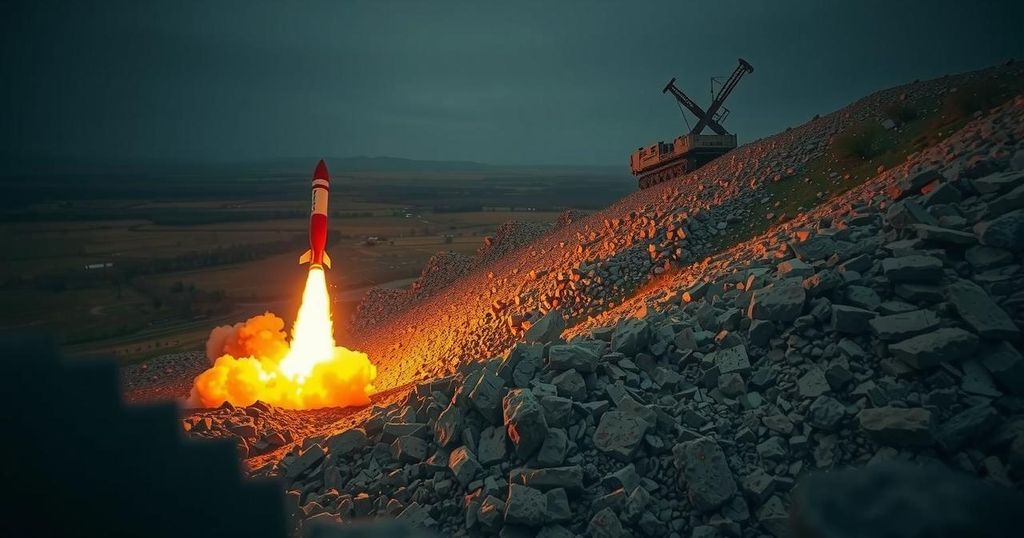On Thursday, rocket fire from Lebanon killed five in northern Israel, marking the deadliest such incident since the start of Israel’s invasion. U.S. diplomats were in the region advocating for ceasefires as Hezbollah continued attacks following hostilities initiated by Hamas on October 7, 2023. The conflict has led to significant casualties on both sides, with over 2,800 deaths in Lebanon and at least 68 in Israel.
Rocket fire from Lebanon resulted in the deaths of five individuals, including four foreign workers, in northern Israel on Thursday. This incident marked the deadliest attack of its kind since the commencement of Israel’s invasion earlier this month. The attack transpired during the visit of senior U.S. diplomats to the region, who were advocating for ceasefires amidst ongoing hostilities in Lebanon and Gaza. Since Hamas initiated the conflict on October 7, 2023, the Hezbollah militant group has intensified its assaults on Israel, employing rockets, drones, and missiles, which provoked retaliatory strikes from the Israeli military. The conflict escalated significantly last month when Israel intensified its airstrikes against Hezbollah, resulting in the death of several key leadership figures within the organization, including its long-time leader, Hassan Nasrallah. Since the outset of the war, areas surrounding the northern border have witnessed substantial damage, and the town of Metula, which has been evacuated, continues to bear the brunt of these attacks. Authorities have faced criticism for placing foreign workers in harm’s way by permitting their presence along the volatile border region without adequate protection. Following the recent attack, Hezbollah’s new leader, Sheikh Naim Kassem, publicly stated that the group will persist in its combat against Israel until satisfactory ceasefire terms are established. Despite recent setbacks, Kassem affirmed, “Hezbollah’s capabilities are still available and compatible with a long war.” In response to the increasing violence, the Israeli military has urged further evacuations in southern Lebanon, while hostilities have resulted in significant casualties on both sides since the conflict ignited last year. Over 2,800 individuals have died and nearly 13,000 have sustained injuries in Lebanon, while in Israel, at least 68 fatalities have been reported, half of whom were soldiers.
The recent increase in conflict between Israel and Hezbollah can be traced back to a series of violent exchanges following Hamas’s initial strike on October 7, 2023. This breach of peace attempted to escalate existing tensions and has resulted in a brutal military response from both Hezbollah and Israel. Notably impacted are the areas bordering Lebanon, where military actions have forcibly displaced local populations and resulted in casualties among civilians and military personnel alike. The complex nature of this conflict is further exacerbated by external diplomatic pressures, particularly from the United States, which seeks to broker peace through ceasefire negotiations. As the situation stands, numerous foreign workers have been caught in the crossfire due to their work in agricultural sectors near these tense borders, raising concerns about their safety and the responsibilities of Israeli authorities.
In summary, the recent rocket attack from Lebanon highlights the ongoing and escalating conflict between Israel and Hezbollah, resulting in significant casualties and increased humanitarian concerns in the region. Despite attempts by international diplomats to mediate a ceasefire, hostilities continue unabated, reflecting the entrenched positions of the conflicting parties. As the situation develops, the safety of foreign workers along the border and the overall stability of both Israeli and Lebanese populations remains precarious.
Original Source: apnews.com






